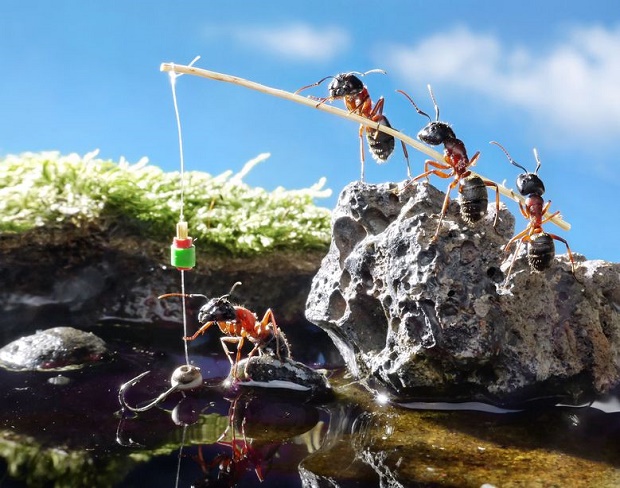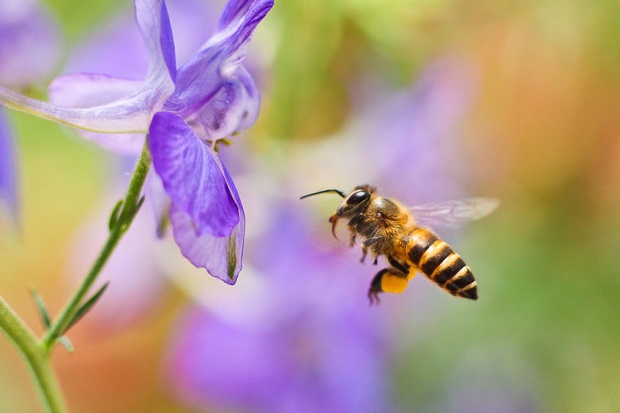
Do Bees Die After They Sting?
Only female non-producing honeybees die after they sting. This is because they are equipped with a barbed stinger that gets stuck in its victim and is torn from the bee’s body along with the venom sac when it pulls away, disemboweling the bee.
This Article Answers:
- How the Honeybee Dies After Stinging
- Do All Honeybees Die After They Sting?
- How Long Does It Take for a Bee to Die After It Stings?
- What About Bumblebees? Do They Die After Stinging?
How the Honeybee Dies After Stinging
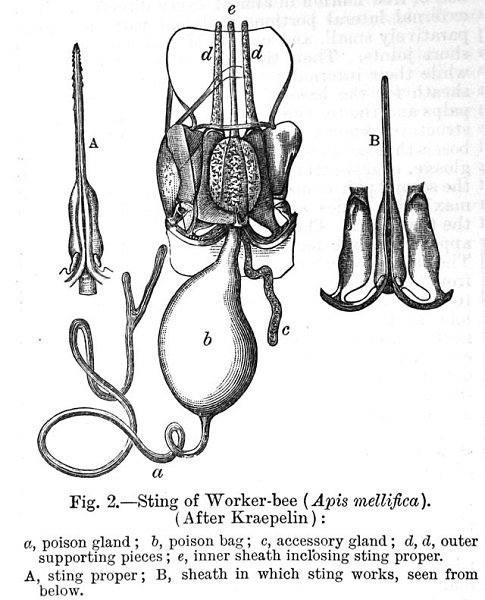
The female worker honeybee is equipped with a unique stinger that consists of two lancelets with recurved barbs that dig deep into the victim’s flesh. ((“Bee Sting Removal.” The University of California – Riverside.)) The center of the stinger is hollow, allowing the venom to flow through from the bee’s venom sac into the victim. ((“Bee Anatomy.” Arizona State University – Ask a Biologist.))
Once the barbed stinger is securely in the victim, it can’t be retracted, so when the bee attempts to fly away, it loses not only the stinger but the lower section of its body. According to experts at The University of California – Riverside, upon retreating, the bee tears off the entire distal segment of the bee’s abdomen, the end of the bee’s digestive tract, the venom sac, a nerve ganglion, and various muscles. It dies soon after. ((“Bee Sting Removal.” The University of California – Riverside.))
Do All Honeybees Die After They Sting?
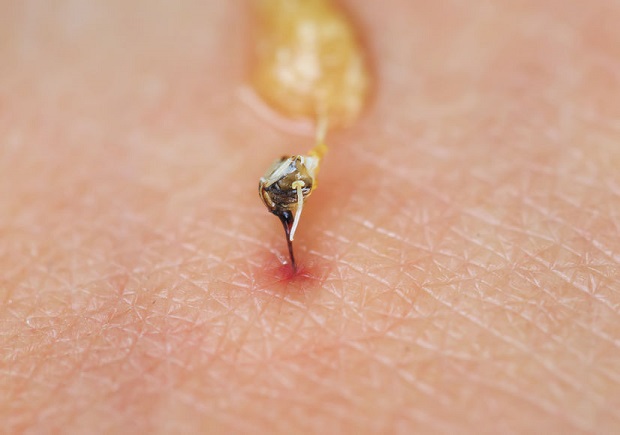
Not all honeybees die after they sting. The death of the honeybee due to stinging is unique to the bee’s body design. Each member of the colony has a specific role, which is determined at birth. Unfertilized eggs develop into drones. Fertilized eggs develop into females, but their role in the colony depends on what they are fed. Female larvae fed nectar and pollen become non-producing workers. Female larvae fed nectar, pollen, and royal jelly become queens. ((Ashley N. Mortensen, et al. “European Honey Bee Apis Mellifera Linnaeus and Subspecies (Insecta: Hymenoptera: Apidae).” The University of Florida Extension.))
It is the role of the female non-producing worker bee to protect the hive and, as such are equipped with the most injurious (and self-sacrificing) stinger. ((Ashley N. Mortensen, et al. “European Honey Bee Apis Mellifera Linnaeus and Subspecies (Insecta: Hymenoptera: Apidae).” The University of Florida Extension.))
The queen honeybee is also equipped with a stinger, but it is only slightly barbed, so she can pull it out after stinging without injury to herself. She only uses the stinger when fighting for dominance with other queens. ((Ashley N. Mortensen, et al. “European Honey Bee Apis Mellifera Linnaeus and Subspecies (Insecta: Hymenoptera: Apidae).” The University of Florida Extension.))
Male drones do not have stingers.
How Long Does It Take for a Bee to Die After Stinging?

According to the University of California – San Diego experts, the female worker honeybee will die soon after it stings. While the detached venom sac is pumping out more venom, in its dying moments, the bee will attempt to distract its victim by flying around its head, feigning another attack. ((Dylan Voeller, James Nieh. “Analysis of Honeybee Aggression.” UC San Diego – Biological Sciences))
What About Bumblebees? Do They Die After Stinging?
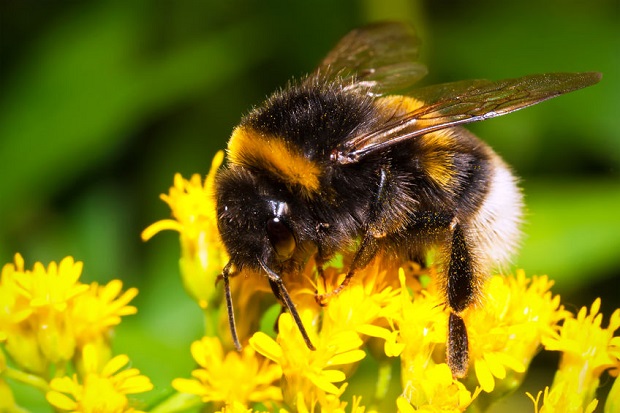
Bumblebees do not die after they sting. They are equipped with smooth stingers and can sting the same victim more than once. According to the experts at Texas A&M Agrilife Extension, bumblebees are not as aggressive as other stinging bees, such as yellow jackets, which can also sting multiple times but will sting if a nest is disturbed. ((“Bumble Bees – Insects in the City.” Texas A&M – Agrilife Extension.))


